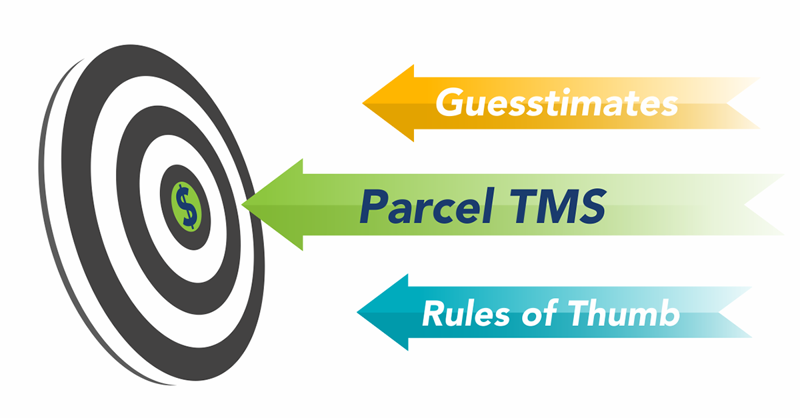With eCommerce driving more parcel service choices, routing and rating calculations have become inherently more complex. The result is that shippers are forced to “guesstimate” shipping costs in sales, order entry, shopping carts, purchasing, and fulfillment, leaving a widening gap between what shippers expect to pay vs. what they are actually invoiced by their carriers. Closing this gap is a real challenge.
Why is it so hard? There are many reasons:
• Lack of Standards: Unlike the LTL and TL freight industries that were once highly regulated and conformed to standard rating, documentation, and EDI requirements, parcel carriers have never been free to define their own proprietary rating methodologies and technology standards.
• Disparate Service Levels: The variety of ground, 3-day, 2-day, next-day, same-day, Saturday, Sunday, over-the-threshold delivery options, all with different time commitments, can vary widely from carrier to carrier, making comparisons very difficult.
• Accessorials and Special Services: Adding to the confusion are the additional fees and surcharges parcel carriers have been introducing with more regularity over the past several years. It is now more difficult to estimate rates when residential and out-of-area surcharges, performance incentives, holiday rush surcharges, and other accessorial fees have to be taken into account.
• Dimensional Rates: With LTL and parcel carriers focused on optimizing the load density of their vehicles, shippers can no longer rely on just weight, service, and destination for rate calculation. They have to take dimensional weight into account. And this assumes they can control containerization processes.
• Rate Changes: Rates are a moving target. Just when you think you have it figured out, carriers go and change it all again. It takes a close look to really understand the impact the annual General Rate Increases (GRIs) have on your business.
• Carrier Re-rating: Think carriers are going to use the rates you calculate at point of shipping? Nope. Most are now re-rating at their terminals, often adding costs that seem indiscriminately applied.
• Parcel vs. LTL: Increasingly the lines are blurring when it comes to mode selection. When a shipment’s weight is near the threshold between parcel, hundredweight or LTL, it’s a hard choice. LTL is becoming more like “LTP” (Larger than Parcel). Rules of thumb and habit (‘that’s the way we’ve always done it’) make estimating accurate costs very difficult.
With no reliable way to estimate shipping costs at point of sale and point of shipping, it’s understandable that guesstimations and rules of thumb are the default process for many companies. Clearly, this is not the right approach, especially with shipping costs increasing at twice the rate of inflation.
The only solution to overcome this problem is to implement a reliable and automated process to route and rate, and then reconcile these calculations against audited carrier invoices. This is only possible with enterprise TMS technology that can automate complex rate calculations in real time at every point in the supply chain. Parcel TMS systems are designed to deal with parcel service complexity and can apply business rules to instantly make cost-effective routing decisions.
With TMS controls in place across the extended enterprise, you can take manual guesswork out of the equation, to immediately and positively impact your bottom line.
